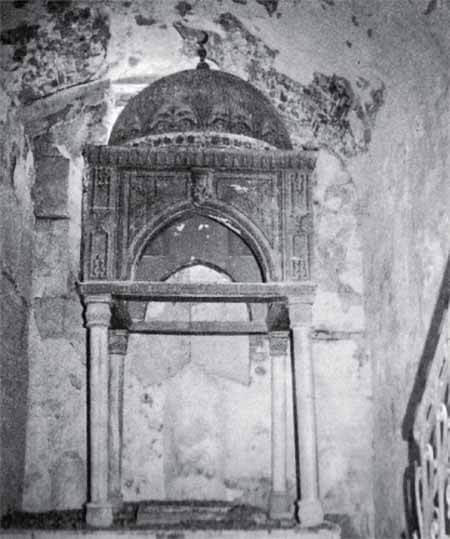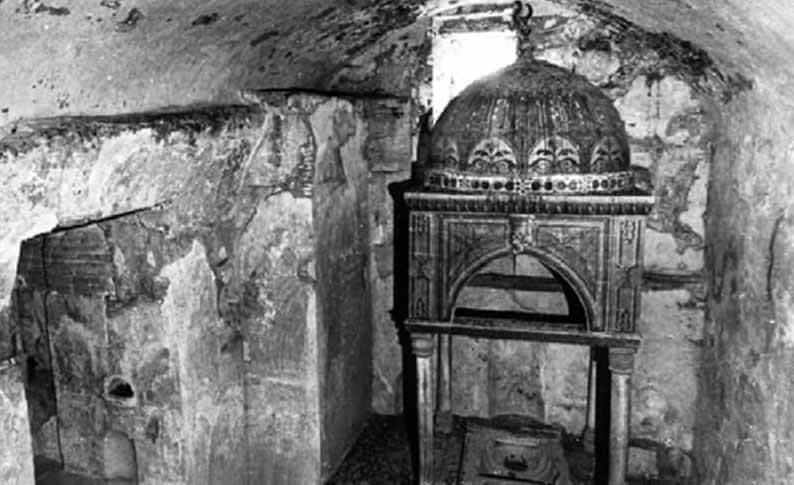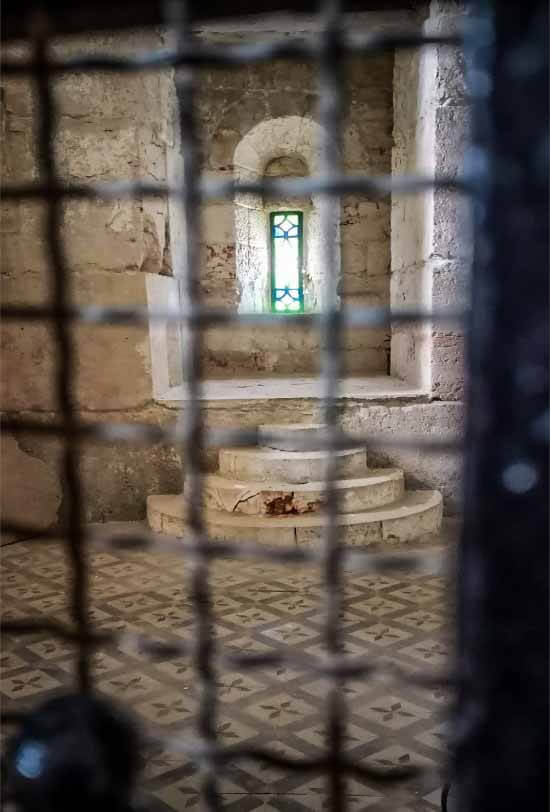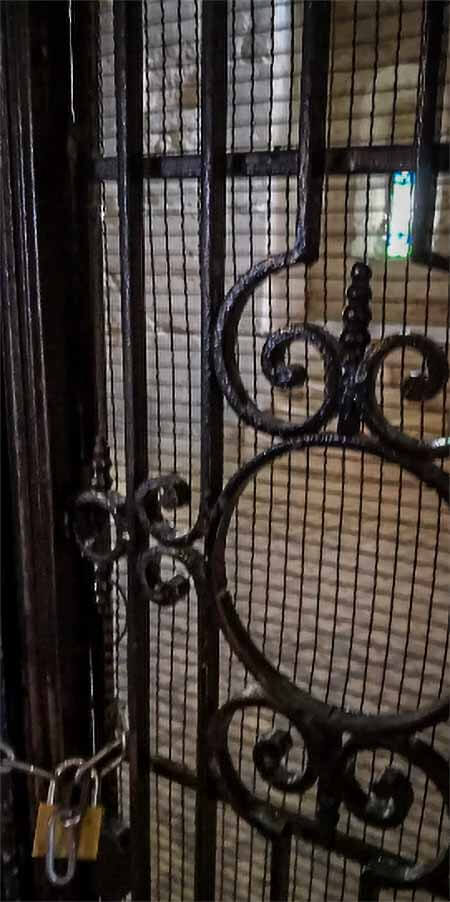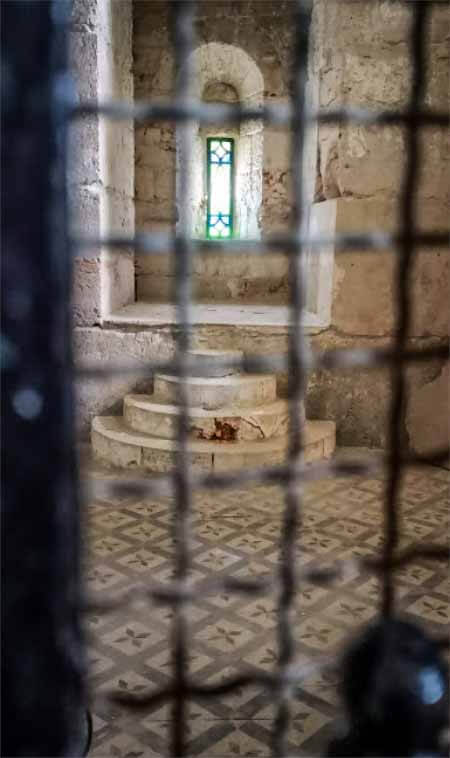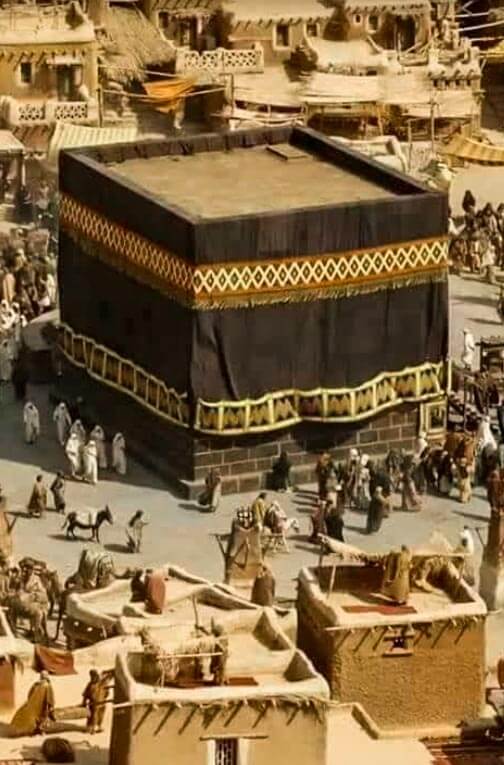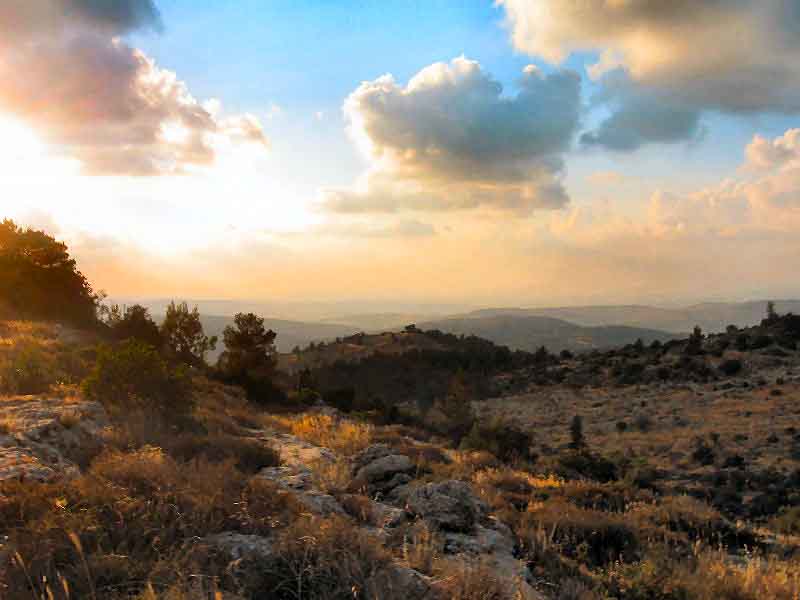Jerusalem, Palestine
Coordinates: 31.776389, 35.236944
The Cradle of Hz. Isa عليه اسلام (also referred to as “Christ’s Mosque”) is a small dome built during the late Ottoman era in 1898 AC, located next to the middle of a staircase on the southeastern corner of Al-Musalla Al-Marwani.
According to the tradition, Cradle of Hz. Isa عليه اسلام (Cradle of Jesus) also known as the Chamber of Bibi Maryam رضي الله عنها (Virgin Mary) and Oratory of Mary is the location where Hz. Isa عليه اسلام was laid down by Miriam before or after being presented in the Temple at the age of 40 days.
The cradle of Jesus (عليه اسلام) is a stone alcove (a recess in the wall of a room or garden) in the floor in the northeastern corner of the court at the entrance to Masjid al-Marwan.
Miracle of Fruits which is mentioned in the Quran
According to Ibn kathir, to ensure that no one had access to Bibi Maryam رضي الله عنها, Hz. Zakariyyah عليه اسلام built a separate room for her in the temple (which is believed to be this chamber).
As she grew up, she spent her time in devotion to Allah. Hz. Zakariyyah عليه اسلام visited her daily to see to her needs, and so it continued for many years. One day, he was surprised to find fresh fruit, which was out of season in her room.
As he was the only person who could enter her room, he asked her how the fruit got there. She replied that these provisions were from Allah, as He gives to whom He wills.
Hz. Zakariyyah عليه اسلام understood by this that Allah had raised Bibi Maryam’s رضي الله عنها status above that of other women. Thereafter, Hz. Zakariyyah عليه اسلام spent more time with her, teaching and guiding her. Bibi Maryam رضي الله عنها grew to be a devotee of Allah, glorifying Him day and night.
Mentioned by many Islamic Scholars
Ibn al-Murajja (al-Maqdisi) (d. 1099), described what he saw in Haram ash-Sharif. In his Fada’il Bayt al-Maqdis, Ibn al-Murajja wrote about “mihrab Maryam, also known as the Cradle of Jesus.”
According to him, Bibi Maryam رضي الله عنها saw Hz. Jibrael عليه اسلام in Jerusalem, although her delivery of Hz. Isa عليه اسلام three hours later had taken place in the “valley of Bethlehem.” She returned to Jerusalem and when Hz. Zakariyyah عليه اسلام saw the hostility against her, he built her an oratory “in the middle of the masjid [mosque]” where the palm tree bore her ripe fresh dates (rutban janiyyan).
Jesus (عليه اسلام) cradle was mentioned by many Muslim authors prior to the Crusader period. Abad Rabia stated in the year 913 CE, “In Haram ash-Sharif are situated the alcoves named after Bibi Maryam رضي الله عنها, daughter of Hz. Imran عليه اسلام, the mother of Hz. Isa عليه اسلام, where the angels were accustomed to hide her winter fruit in summer, and summer fruit during the winter.”
Muhammad ibn Ahmad al-Muqaddasi (c. 945–991) wrote in Ahsan al-taqasim, his encyclopedic work of geography, about al-Haram al-Sharif and the gate called Bab Mihrab Maryam (the Gate of the Oratory of Mary), which led to her oratory. Such a mihrab was mentioned in the Qur’an as the place where Mary had been visited by Hz. Zakariyyah عليه اسلام: “Every time he entered al-mihrab to visit her, he found her supplied with sustenance [food]” (Q 3:37).
A contemporary of al-Muqaddasi, Abu Muhammad ibn Muhammad al-Khuli, dreamt that he visited the Haram, where he offered prayers near “the Cradle of Jesus (عليه اسلام) and the oratory of Mary.”
In 1047, Nasiri Khusrow (1004–c. 1078) on a pilgrimage-cum-secret mission from Persia gave a detailed description of Jerusalem and of the history of the prophets of the Haram: how Hz. Musa عليه اسلام took the rock as his qibla/direction of prayer, and how Hz. Suliaman عليه اسلام built a mosque around it, and how the Prophet Muhammad ﷺ determined it as the first qibla for his followers.
Two of the highlights there were the cradle of Jesus (عليه اسلام) and the oratory of Mary:
“The cradle is made of stone, big enough that people can pray at it . . . and is immovably fixed in the floor. It is the cradle in which Jesus (عليه اسلام) spent his childhood and from which he spoke to people. To the east side is the oratory of Bibi Maryam رضي الله عنها. And there is another ratory for Hz. Zakariyyah عليه اسلام. Above these two mihrabs are Qur’anic verses that were revealed about Hz. Zakariyyah عليه اسلام and Bibi Maryam رضي الله عنها. It is also said that Jesus (عليه اسلام) was born in this mosque. This mosque is known as The Cradle of Jesus, peace be upon him.”
The centrality of Jerusalem, and the Haram in particular, to the life of Hz. Isa عليه اسلام and the Haram can be seen in Muhammad ibn Ibrahim al-Maraghi al-Azarbijani’s report that Ibn al-Murajja’s contemporary, Abu Hamid al-Ghazzali (1058–1111), met with numerous jurists at the cradle of Jesus.
During the assault on Jerusalem in 1099, Muslims sought shelter near the Christian symbols inside the Marwani Musalla (or Solomon’s Stables in later Western parlance), hoping they would be spared.
They were not, and their blood – as Gottfried gloated to the Pope – reached as high as the knees of the horses.
Thereafter, “Jerusalem became a Christian city, where no Muslim or Jewish cult was permitted and no non-Christian could take residence permanently. The mosques were turned into churches or used as secular buildings” – and the musalla of the cradle and the oratory was dedicated as a chapel in honor of Mary. Even so, Muslim pilgrims and Sufi adepts trekked to the city and continued their veneration at the cradle of Jesus.


